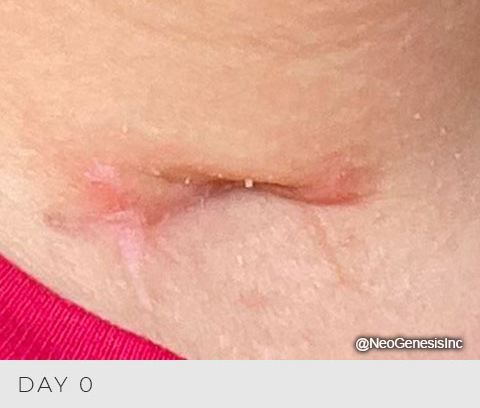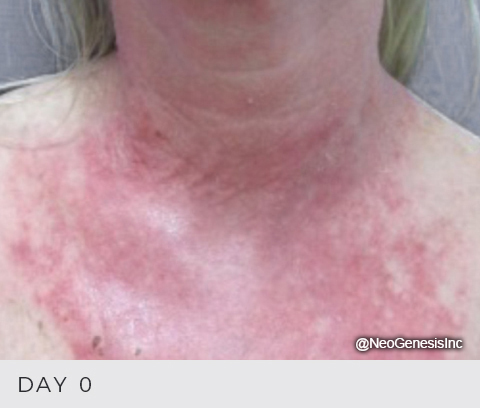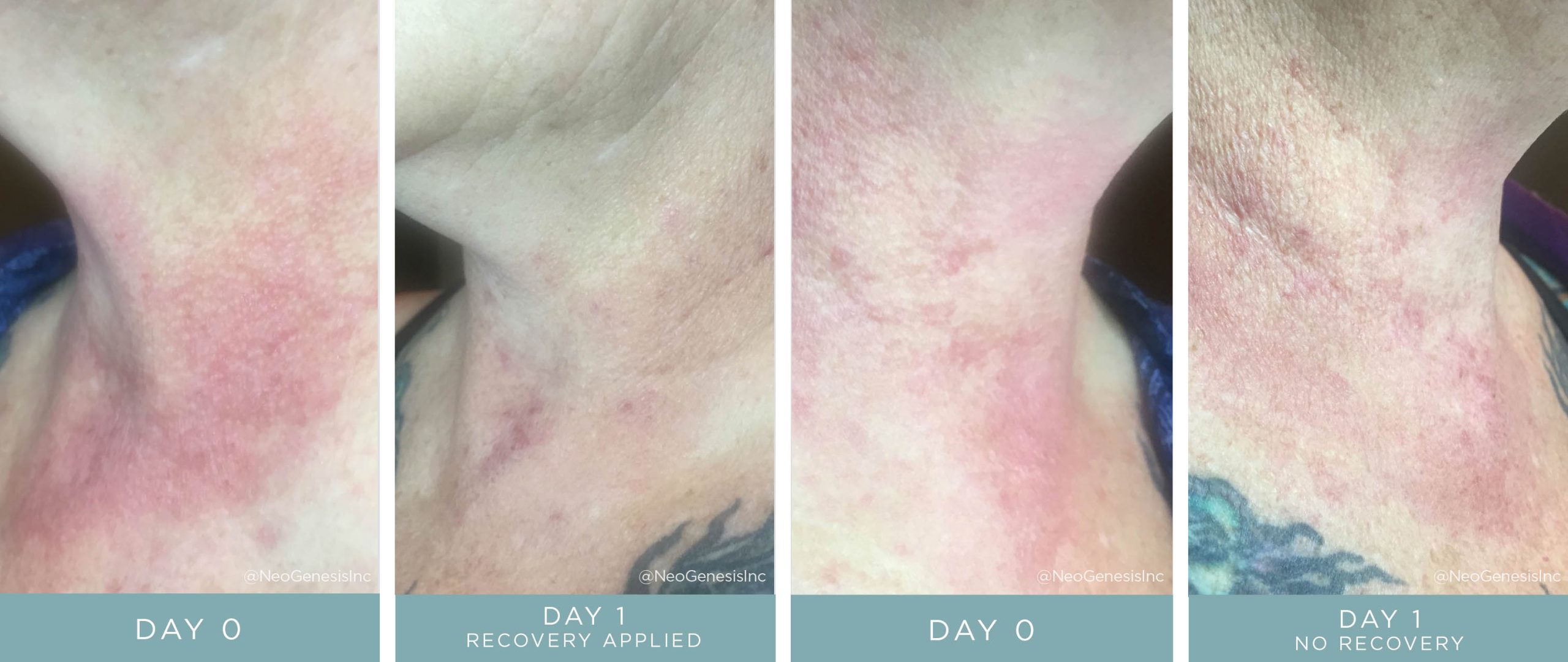Chemical Peel
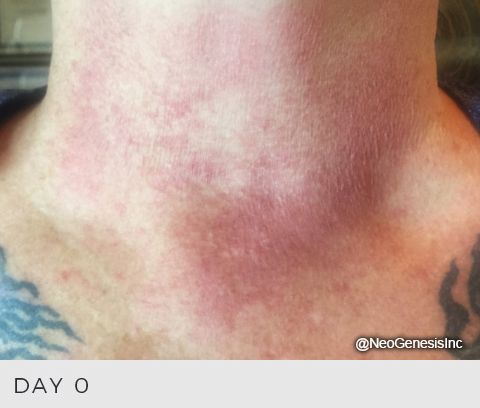
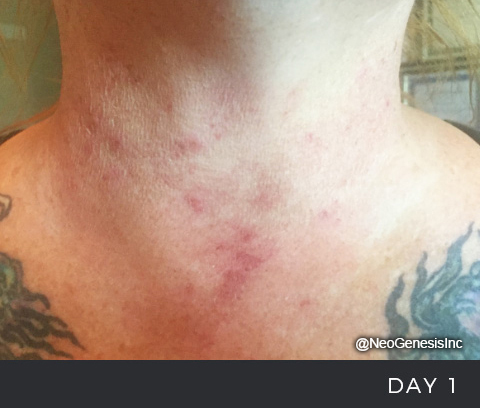

“As my initial pictures indicate, I had a reaction to a peel. I applied Recovery over half of my neck. The second set of pictures shows my neck roughly 24 hours later. The side that I put Recovery on completely calmed down. The side I did not apply Recovery to blistered and was very painful. As a licensed Aesthetician I highly recommend using Recovery post chemical peel.” – Sheryl Y.
FEATURED VIDEOS
CHEMICAL PEEL
Chemical peels are a popular cosmetic procedure used to improve the appearance of skin by removing damaged outer layers. While there are various types of chemical peels, they all work by applying a chemical solution to the skin and allowing it to peel off, revealing newer, healthier skin underneath.
While chemical peels can be highly effective for treating acne scars, hyperpigmentation, and fine lines, they do come with some potential side effects. It’s important to understand these possible reactions before undergoing a chemical peel procedure.
One of the most common side effects of chemical peels is redness and irritation. This is because the chemical solution used in the peel can cause inflammation on the skin. This typically subsides within a few days but may persist for longer depending on the strength of the peel and your skin’s sensitivity.
Another common side effect is peeling or flaking skin. This occurs as a result of the outer layer of skin being removed, revealing new skin cells underneath. While this may sound alarming, it is a normal part of the healing process and should not be cause for concern.
In some cases, chemical peels can also cause temporary discoloration or changes in skin pigmentation. This is more common in individuals with darker skin tones, as the peel may remove too much pigment from the skin. However, this typically resolves itself within a few months.
Before getting a chemical peel, it is important to understand that this treatment is not a one-size-fits-all solution. Each individual’s skin is unique and requires a customized approach to determine the right type of peel, strength and frequency of treatments. Discuss with a skincare or medical professional to determine whether a peel is right for you.
If you decide to proceed, it is important to prepare the skin for a minimum of two weeks before the peel. This preparation will strengthen the skin, feeding it the nutrients it needs to improve the results.
Click here to learn what skin care protocols are recommended pre and post chemical peel.

“As my initial pictures indicate, I had a reaction to a peel. I applied Recovery over half of my neck. The second set of pictures shows my neck roughly 24 hours later. The side that I put Recovery on completely calmed down. The side I did not apply Recovery to blistered and was very painful. As a licensed Aesthetician I highly recommend using Recovery post chemical peel.” – Sheryl Y.
FEATURED VIDEOS
CHEMICAL PEEL
Chemical peels are a popular cosmetic procedure used to improve the appearance of skin by removing damaged outer layers. While there are various types of chemical peels, they all work by applying a chemical solution to the skin and allowing it to peel off, revealing newer, healthier skin underneath.
While chemical peels can be highly effective for treating acne scars, hyperpigmentation, and fine lines, they do come with some potential side effects. It’s important to understand these possible reactions before undergoing a chemical peel procedure.
One of the most common side effects of chemical peels is redness and irritation. This is because the chemical solution used in the peel can cause inflammation on the skin. This typically subsides within a few days but may persist for longer depending on the strength of the peel and your skin’s sensitivity.
Another common side effect is peeling or flaking skin. This occurs as a result of the outer layer of skin being removed, revealing new skin cells underneath. While this may sound alarming, it is a normal part of the healing process and should not be cause for concern.
In some cases, chemical peels can also cause temporary discoloration or changes in skin pigmentation. This is more common in individuals with darker skin tones, as the peel may remove too much pigment from the skin. However, this typically resolves itself within a few months.
Before getting a chemical peel, it is important to understand that this treatment is not a one-size-fits-all solution. Each individual’s skin is unique and requires a customized approach to determine the right type of peel, strength and frequency of treatments. Discuss with a skincare or medical professional to determine whether a peel is right for you.
If you decide to proceed, it is important to prepare the skin for a minimum of two weeks before the peel. This preparation will strengthen the skin, feeding it the nutrients it needs to improve the results.
Click here to learn what skin care protocols are recommended pre and post chemical peel.





